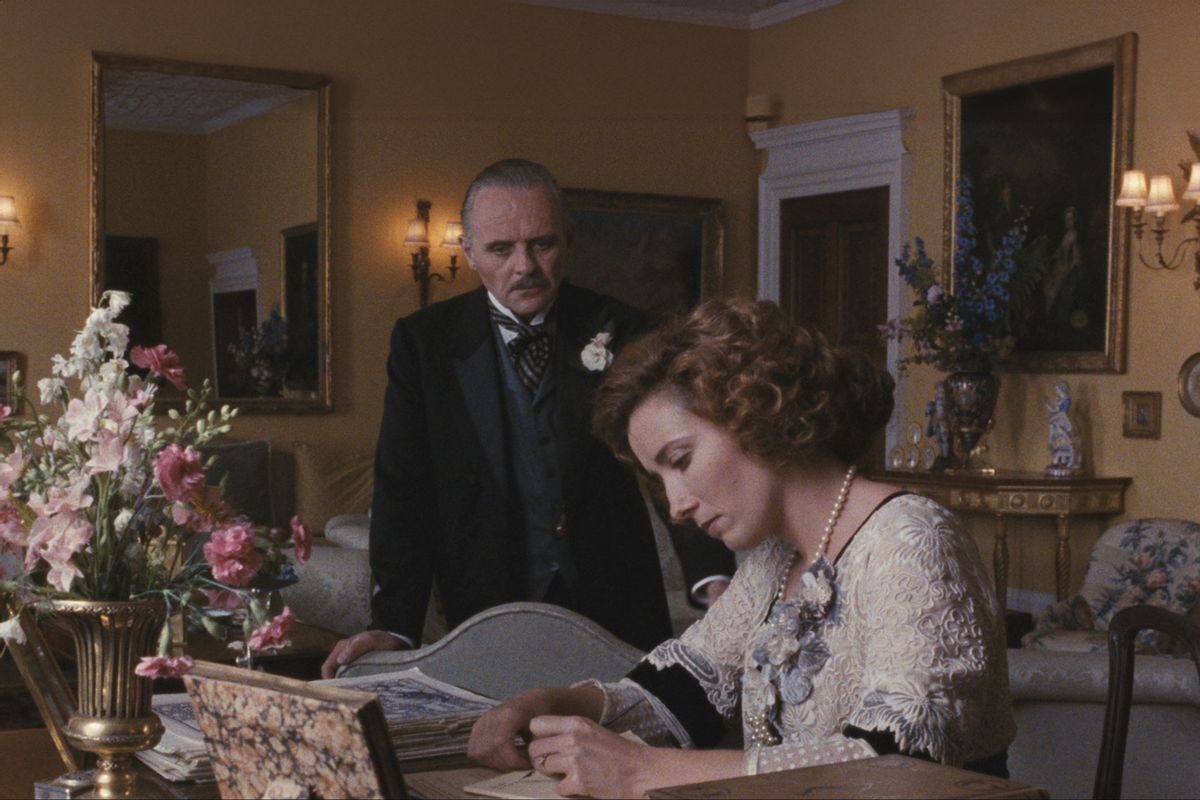Director James Ivory and producer Ismail Merchant made 43 films together between 1961 and 2007. They worked with screenwriter Ruth Prawer Jhabvala and composer Richard Robbins on more than half of them. Director Stephen Soucy’s valentine of a documentary “Merchant Ivory” recounts their remarkable partnership as well as individual moments in their lives and careers.
“Merchant Ivory gave a lot of actors, like Hugh Grant, their first major roles.”
Interviews with many of the actors who worked on their films provide illuminating observations about the couple’s distinctive brand of cinema. Helena Bonham Carter, describes the filmmaking team as having a “symbiotic” relationship. Actress Emma Thompson sees “The Remains of the Day,” which she starred in for the filmmakers, as being “about people in disguise . . . because of society and culture,” and explains how that theme spoke to her as well as to Merchant, Ivory and Jhabvala.
Soucy focuses on the highs of Merchant and Ivory’s films, which began in the 1960s with films like “The Householder” and “Shakespeare-Wallah,” and developed over the next two decades before their 1985 adaptation of E.M. Forster’s “A Room with a View” became an unqualified success. Suddenly, Merchant and Ivory were household names, and two subsequent Forster adaptations, “Maurice” and “Howards End,” as well as their screen version of Kazuo Ishiguro’s “The Remains of the Day,” cemented their reputation as impeccable filmmakers.
“Merchant Ivory” also features sidebars with living authors Tama Janowitz (“Slaves of New York”) and Peter Cameron (“The City of Your Final Destination”), whose books were adapted for the screen as the filmmakers moved away from the period costume dramas. However, both critics and audiences were mostly unimpressed with the couple’s later features
In a recent interview, director Stephen Soucy spoke with Salon about his thoughts on the films of Merchant Ivory and his documentary, “Merchant Ivory.”
Merchant and Ivory complemented each other in both work and life. Why do you think they were able to sustain such a long and marvelous career and relationship?
I think they realized they had a really good thing going. There was a much stronger commitment on the business side of their lives. Once Merchant Ivory productions became an entity, they were just driven to keep that going. In the 1990s, when Merchant wanted to direct his own films, and the company was making two feature films a year. They were partners in life and partners in business. They came up with the idea of having an open relationship not too long after they got together in 1961. I know from research that I did for the film — I rummaged through James Ivory’s basement, and I found letters between them after they first met — and you could track the trajectory of their relationship. I saw when things were coming to an end. Merchant Ivory productions held their partnership together.
Howards End (Cohen Media Group)You assemble an extraordinary roster of talent, from Vanessa Redgrave and Hugh Grant to Emma Thompson and Helena Bonham Carter to talk about their collaborations with Merchant Ivory. What surprised you about their anecdotes and experiences? There are some juicy comments.
Emma Thompson saying, “After you worked on a Merchant Ivory film, everybody says never again.” That rings true for some people, but not others. Carol Hemming, Merchant Ivory’s makeup and hair person, worked with them from “The Bostonians” through to “The City of Your Final Destination,” with memorable stops at “Jefferson in Paris,” and “Howards End” and “A Room with a View.” So, a lot of the people behind the camera were dedicated and looked at a Merchant Ivory film as an opportunity for more quality work. Helena Bonham Carter did “A Room with a View,” but there wasn’t a good role for her [again] until “Howards End.” When they wanted to do “Le Divorce,” Ivory was interested in casting Emma Thompson, and she wasn’t interested in a role and didn’t come back after “The Remains of the Day.”
Everyone has their stories and their own recollections. With Vanessa Redgrave, a piece of footage that I wasn’t able to include in my film featured Ismail and James interviewed about casting Vanessa in “Howards End.” At first, Vanessa wasn’t interested in taking that role on, but then Ismail asked, “What would it take for you to do this role?” Vanessa said, “You double what you offered me, and I’ll do it.” And Ismail said, “Yes. Done. You’re in the film.” Everyone had a different anecdote that pertained to their own careers. Hugh Grant told a crazy story — I have bonus material on the MerchantIvoryfilm.com website — about supporting “Maurice” at the Venice Film Festival. James Ivory took a nap in Hugh’s hotel room and accidentally used his hemorrhoid cream to brush his teeth instead of the toothpaste. That was only something Hugh Grant could tell.
The filmmakers are masters of literary adaptation, thanks in no small part to Ruth Prawer Jhabvala. Their films featured the most gorgeous costumes and art direction. Why do you think they are so popular?
We did an event at Laemmle Royal [in Los Angeles] and this woman in her early 70s came up to me and said, “I love your documentary, but it makes me sad, because they don’t make films like this anymore.” She called out something that I hadn’t thought about — the fact that Merchant Ivory brought the caliber of these actors together to do these films. All these actors wanted to work with Merchant Ivory. Gwyneth Paltrow in “Jefferson in Paris,” Naomi Watts in “Le Divorce” or Laura Linney in “The City of Your Final Destination.” There was a time everyone wanted to be in a Merchant Ivory film. I think it’s the brand. I think the beauty of these films, and that they made these beautiful films for low, low, low budget. But everyone knows Merchant Ivory would put this incredible quality up on the screen, and everyone wanted to be a part of that. It was on everyone’s checklist to make a Merchant Ivory film. Anthony Hopkins went back again and again and again until he got to “The City of Your Final Destination,” and then ended up suing them. But he was all-in on that film.
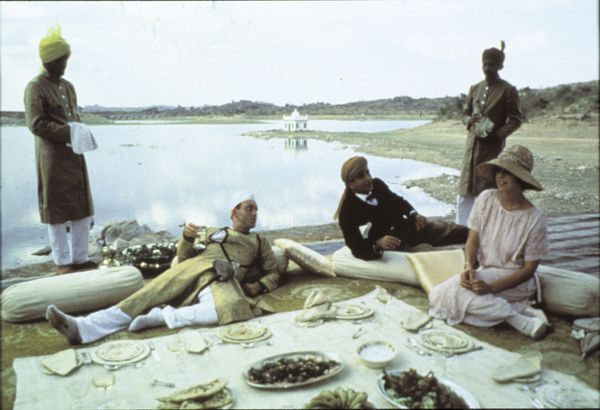 Heat and Dust (Cohen Media Group)I think “Heat and Dust” as quintessential Merchant Ivory. It was a bridge between their Indian cinema period and their British heritage or period films that came after. What do you think about this film as a template for their distinct brand of cinema? It is arguably, most typical of their work.
Heat and Dust (Cohen Media Group)I think “Heat and Dust” as quintessential Merchant Ivory. It was a bridge between their Indian cinema period and their British heritage or period films that came after. What do you think about this film as a template for their distinct brand of cinema? It is arguably, most typical of their work.
I wish I could have taken a deeper dive on “Heat and Dust.” There are many things about that film that exemplified Merchant Ivory. Ismail Merchant started that film with only 30% of the budget. He ran around panicked trying to secure the additional 70%. It was typical action on a Merchant Ivory set — not having enough money; agents and managers telling their people to stop working because the money is not coming in; and Ismail having to finagle through it and his making a curry dinner on the grounds of some gorgeous palace that they couldn’t get into, but everyone wanted to see.
“Heat and Dust” is based on Ruth’s Booker prize-winning novel which illustrated her incredible talents as a writer. She was a novelist first and foremost. The screenplays were almost secondary for her; they were a job she was hired to do. The film itself was made on a limited budget, but they captured the beauty of India in that film. Greta Scacchi starred in that film, and it was her first major film role. How many times did that happen? “A Room with a View” was Helena Bonham Carter’s second film after “Lady Jane.” Merchant Ivory gave a lot of actors, like Hugh Grant, their first major roles.
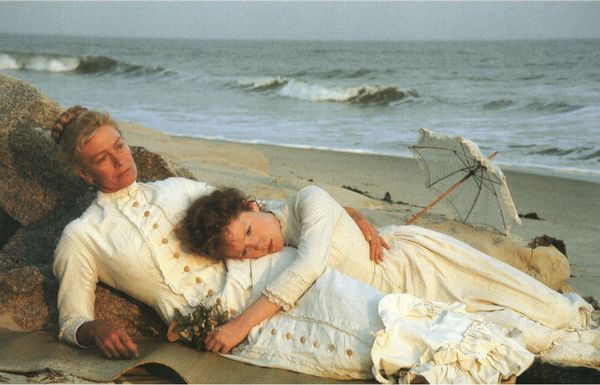 The Bostonians (Cohen Media Group
The Bostonians (Cohen Media Group
“The Bostonians” got an Oscar nomination for Vanessa Redgrave, but the film never quite had the visibility of many films they made after. Why do you think that was?
I think it was ahead of its time. Merchant Ivory didn’t shy away from the relationship between Madeleine Potter and Vanessa Redgrave’s characters. It was front and center. They seemed to be ahead of curve of LGBT representation in film. They weren’t known for that. Even with “Maurice.” It was more about the beauty of their films. They started prepping “The Bostonians” for PBS. It was going to be made for television, and somehow, it was unplugged from PBS, bur they already started pre-production, so they decided, we’ll make it as a Merchant Ivory film. It was meant to be something much more limited than what it became.
“A Room with a View” was the filmmaker’s breakout success. Why do you think that was the film that connected with viewers?
I think it’s the timing of things. Sometimes you make a film, and everything comes together. The casting on the film. Three-time Academy Award-winning costume designer Jenny Beavan said about that film, “Nobody had any idea the music was going to be as gorgeous as it was.” The beauty of production design. It was the first film that Tony Pierce-Roberts shot. He was a really good match for James Ivory. That’s when they used cranes and do tracking shots and move it around. The cinematography on “A Room with a View” was really kind of a breakout – and all of these things together, Helena Bonham Carter and Daniel Day-Lewis, all of it worked. It was the biggest success for an art-house film. Another thing about it was that Ruth Prawer Jhabvala wrote a perfect screenplay. Merchant Ivory are known for their literary adaptations, but having a novelist like Ruth doing the adaptations made a big difference for all of the books.
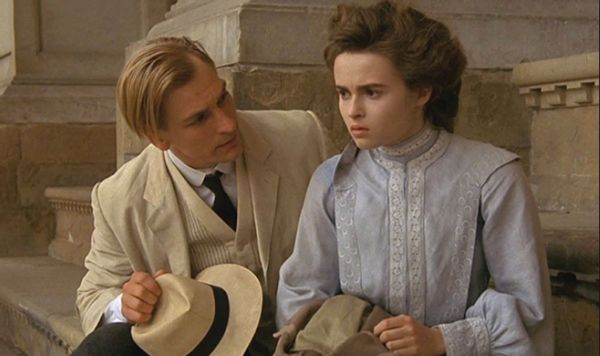 A Room With a View (Cohen Media Group)
A Room With a View (Cohen Media Group)
“Maurice,” their subsequent feature, was also very respected, even though many questioned why the filmmakers who could have done almost anything after “A Room with a View,” would make a gay film at that time. Folks actually questioned why they did this. What are your thoughts about this project?
“I saw myself on screen.”
It was Jim Ivory who drove “Maurice.” I partner that film with Jim in my film. It was his vision to do it. He knew the time was now for that. We have to remember. That was the peak of the AIDS crisis in 1986-’87. Remarkably, he had the vision to do it and thought this was the time and it might not come around again. Ruth wasn’t as interested in doing it; she thought it was a subpar Forster novel. But there was something about that story at that time that it was important to make. It didn’t have a phenomenal theatrical release. But I think it found its audience. I saw it on VHS, and I saw myself on screen. I think a lot of people had that reaction. I think it’s the Merchant Ivory film that has had the biggest, most important impact on an audience over time.
“Maurice” is another example of a film they had to take a pause on during shooting because they ran out of money. That scene where Scudder (Rupert Graves) is supposed to get on the boat was shot after they finished the main production. There were so many stories of a Merchant Ivory film that had to stop because they ran out of money. James Ivory gives Ismail the lion’s share of the credit for always getting the money in these fiercely independent productions. They were starting from zero on a lot of their films. They didn’t make a lot of money off “A Room with a View.” Most of [the profits] went to the distributor. When they were prepping for “Maurice,” Ismail had to raise almost the entire budget. People should be in awe that Ismail brought every single film over the finish line. None were abandoned. They were always finished and released in theaters.
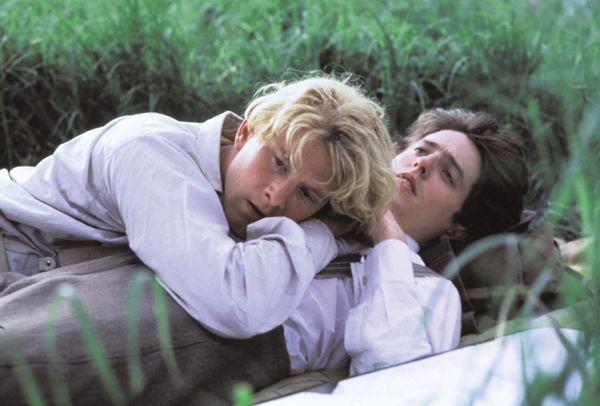 Maurice (Cohen Media Group)“Howards End,” their third Forster adaption, is considered their masterpiece. It was followed by the exceptional “The Remains of the Day.” What observations do you have on how Merchant and Ivory worked at the height of their powers?
Maurice (Cohen Media Group)“Howards End,” their third Forster adaption, is considered their masterpiece. It was followed by the exceptional “The Remains of the Day.” What observations do you have on how Merchant and Ivory worked at the height of their powers?
You said it. They were at the height of their powers at that point. There is a shorthand that comes from working with the same people over and over again. They were a well-oiled machine. I’d also say, the material itself was a perfect match for Merchant Ivory. “Remains of the Day” was supposed to be a Mike Nichols’ film, and Meryl Streep wanted to play Miss Kenton, and she was angry she didn’t get the role. She tried to get Ivory to hire her. But he went with Emma Thompson.
I actually have considerable fondness for “Slaves of New York,” an atypical Merchant Ivory production. I also thought highly of “A Soldier’s Daughter Never Cries,” but these more contemporary films and a few others, like “Le Divorce,” didn’t connect with audiences, and sometimes not even with critics. Do you think Merchant and Ivory were pigeonholed, or that they reached their pinnacle and fell off?
I think it was the type of stories that they were drawn to make at that point, which, again, were often based on books. With “Slaves of New York,” Tama wanted to do the screenplay on that. If Ruth had agreed to write that . . .
I don’t see Ruth writing “The Slaves of New York”!
Tama even said in our interview that she wished she hadn’t been so adamant about writing that screenplay solo because she was out of her element. That film is such a time capsule for New York. Would you say “Slaves of New York” is flawed?
No. I think it is underrated, ignored and unloved. It’s episodic, because it is based on interconnected short stories, but the cast is fantastic — Bernadette Peters, Mercedes Ruehl, Mary Beth Hurt and Steve Buscemi. I’m always disappointed that film did not do better.
You also mentioned “A Soldier’s Daughter Never Cries,” which is a very ambitious and a very good film. “Surviving Picasso” and “Jefferson in Paris” didn’t connect, and I think that the critics had significant issues with those films, but maybe not “Soldier’s Daughter.” The first draft of the screenplay for “Jefferson in Paris” was 350 pages, and they kept paring it down and cutting. There were too many threads in that film, and they tried to tell too many pieces of the story. It didn’t come together. Whereas “Soldier’s Daughter” stands up story-wise and screenplay-wise. I think it’s a wonderful film.
When I saw “The White Countess,” I was bored. I didn’t connect with it. I also wasn’t connecting with Anthony Hopkins’ performance in “Surviving Picasso.” I think a lot of people who loved Merchant Ivory went to see every single film, but coming away disappointed with those later films. That’s how they lost a big part of their audience. People wanted to see “Howards End” and “The Remains of the Day,” and they weren’t being served up those films. Merchant Ivory made the films they wanted to make. They were done with that period and moved on. Ismail started directing his own feature films.
What Merchant Ivory film do you think folks should see, and why?
For me, “Maurice.” I think it stands the test in time. The message of that film was super important for James Ivory. He felt “A Room with a View” and “Maurice” were like two sides of a coin. Watching Lucy Honeychurch [Helena Bonham Carter’s character in “A Room with a View”] choose to marry for love and then to see James Wilby as Maurice makes his own decision to go down that path resonates still. It’s hard to choose just one Merchant Ivory film. If you are looking for a Merchant Ivory film for who Merchant Ivory was going to be, I would take a look at “Shakespeare-Wallah.” It really is the one Indian film that absolutely holds up and is the model for what Merchant Ivory became. My favorite movie, however, is “Howards End.” That’s the one that is “perfect in every way.” That was the film that pushed me to go to film school. I saw that and “The Remains of the Day” back-to-back and those were the kinds of film I wanted to make.
“Merchant Ivory” opens in select theaters Aug. 30, with a national expansion to follow.
Read more
interviews by Gary Kramer
